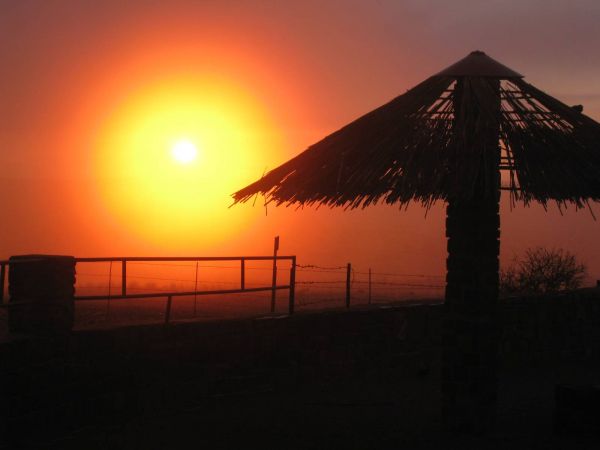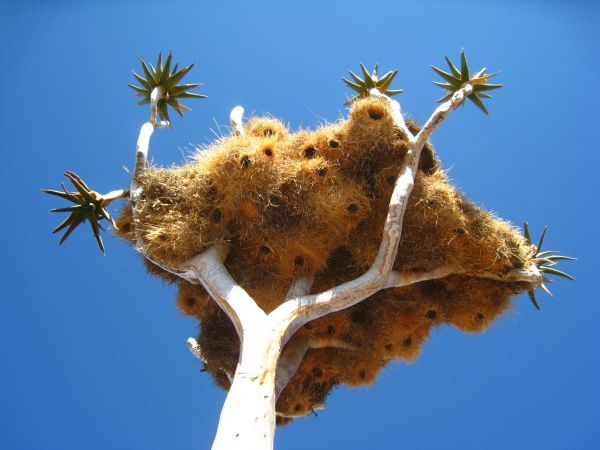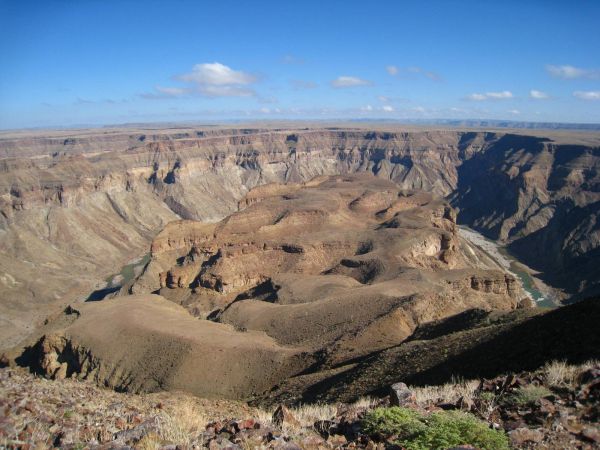The maze of Fish river canyon
By dorian on Thursday 19 June 2008, 16:19 - RTW2-Namibia - Permalink
To inaugurate the « unlimited mileage » package of our hire Opel Corsa, we decide to head for Namibia. The South-african discovery will fill the second part of the trip. The asphalt ribbon unrolls over 700km up to the south Namibian border. The road is desesperately straight and the dotted line on the ground as hypnotizing as the triteness of the scenery. We spend the night just after the border crossing.
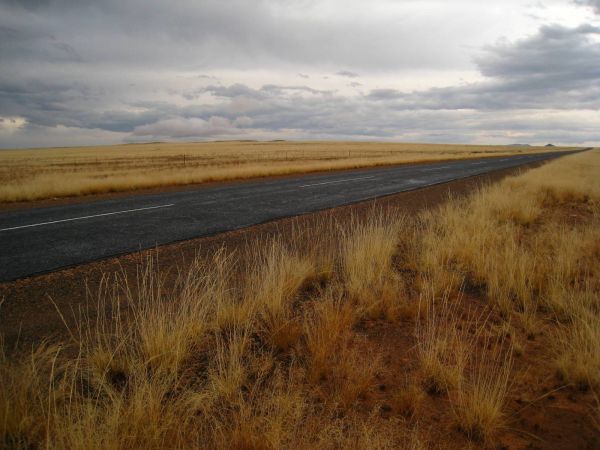

In the morning, we start our first untarred road to reach the Hobas village. On the way, we catch sight of elegant springboks which look us up and down before clearing off making some prodigious several-meter leaps. A rectangular water tank and few huts announce the beginning of Hobas. This village is the departure point to visit the Fish river canyon; the second largest canyon in the world after the Colorado one in the USA. Unlike its elder brother we can only follow inside by kayak, a trail describes the meanders of this canyon. A great 5-day 85-kilometer trek to reach the Ai-Ais village and the possibility to catch a shuttle back to Hobas. However before embarking on the path, a local responsible requires a medical certificate for the trekking ability we don't have. Impossible to negociate, we'll have to content ourselves with admiring the canyon from the upper part. We thought about looking for a doctor in the campsite beside the village but we finally changed our mind.
A long, straight, clay-reddish, about-10-kilometer lane ends on a viewpoint. The monotony in no way unveils what is waiting for us. We slam the door and the suspense is still there. A few steps ahead and the fracture suddenly appears. A break as emotionnal as geological. In the past, a plain that a river gnawed for millions of years and down to several hundreds meters deep. A grandiose spectacle. Hairpin curves, rocky different-level plateaus, sharpened astoundingly-proportioned ridges. Long minutes of silence to contemplate, to scan and to get intoxicated.
And to wonder at all of this, less that 10 tourists. Lucky we are, but for sure the touristic potential in Namibia is huge and the authorities take a long time developping it.
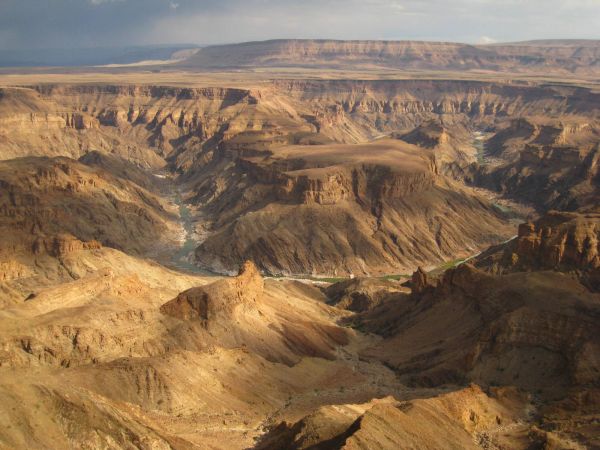
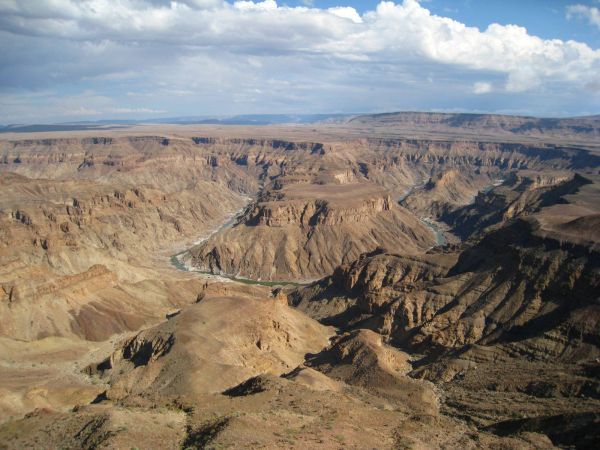
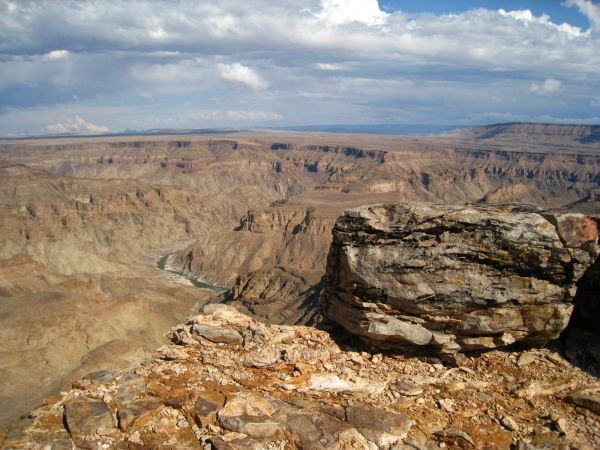
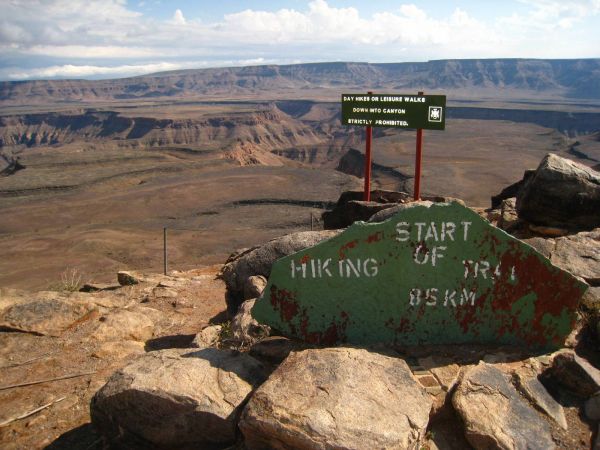
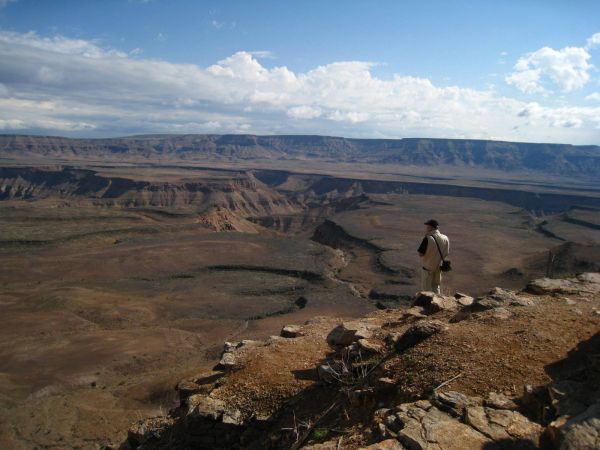
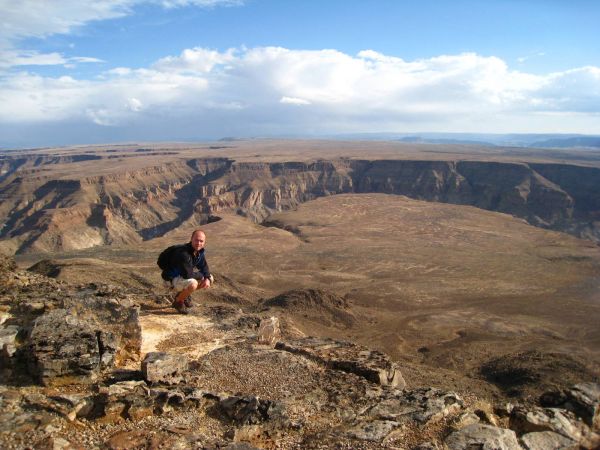
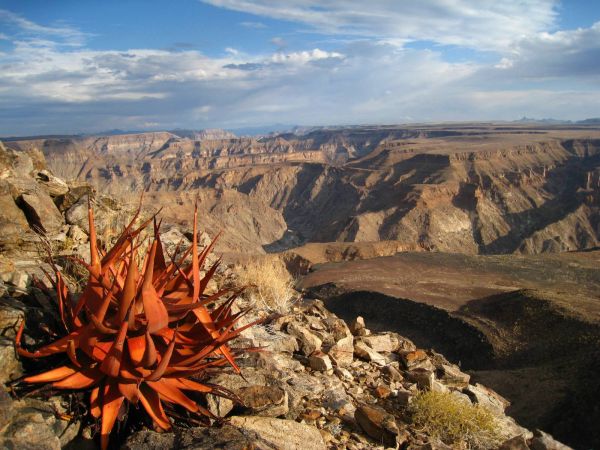
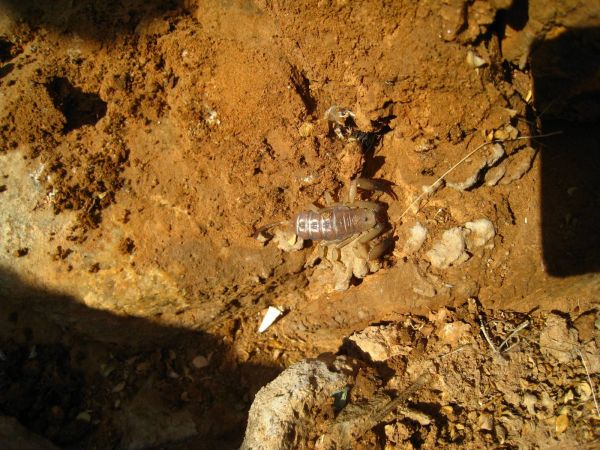
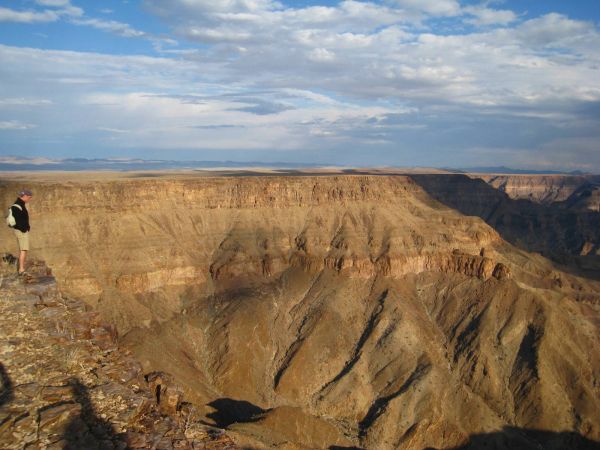
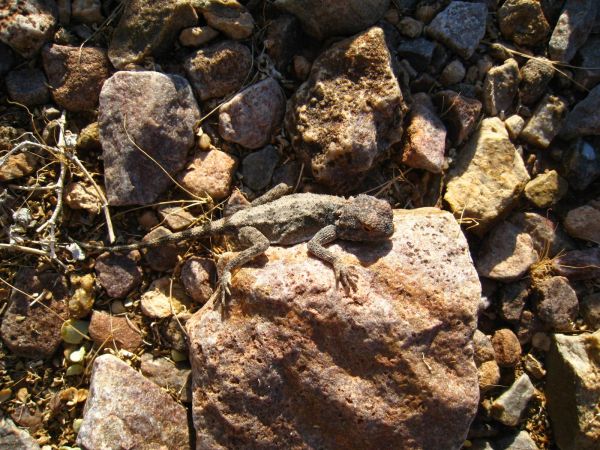
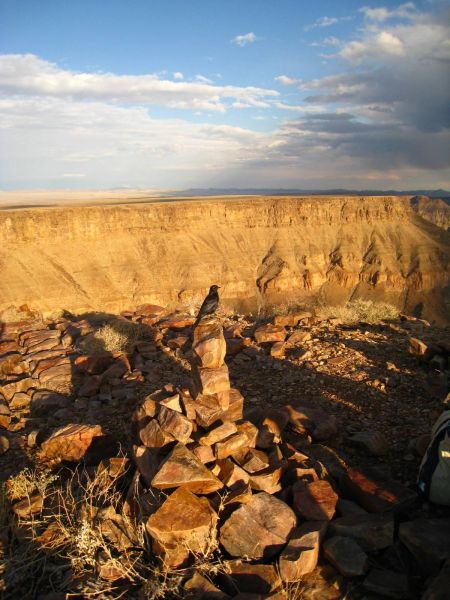
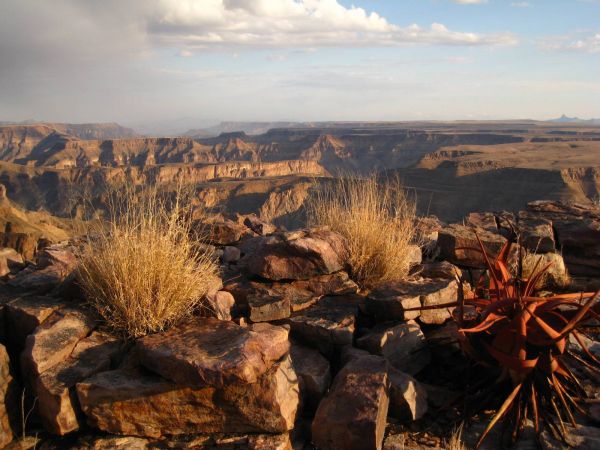
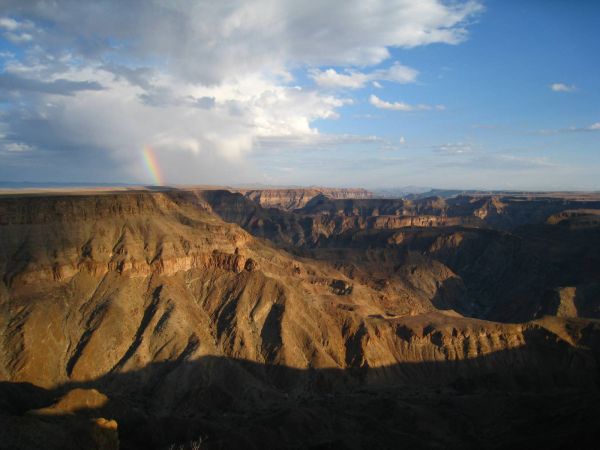
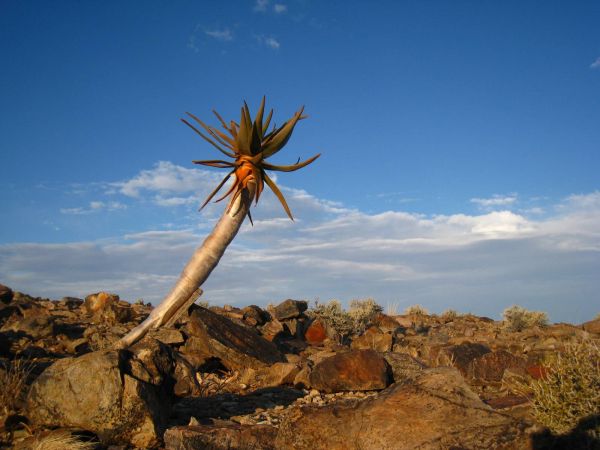
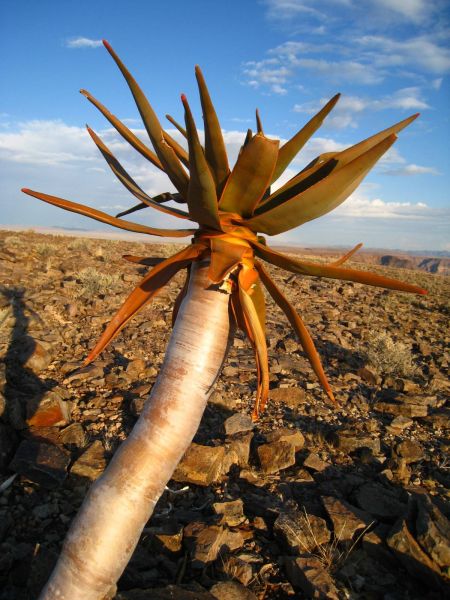
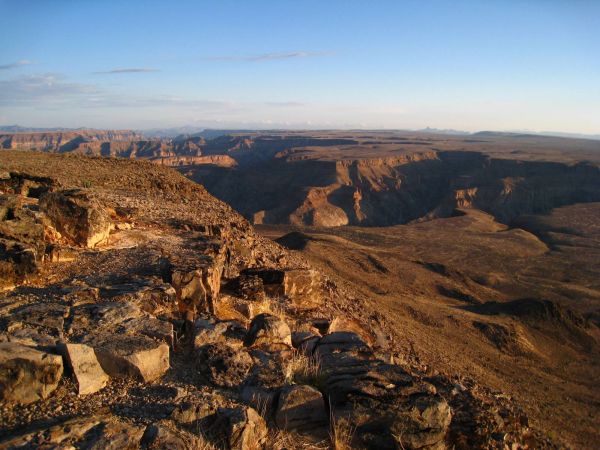
The next day, back at the scene to enjoy a sunrise. The day goes on at the edge of the cliff. Strange trees dot the dry ground, they are called the kokerboom or « quiver trees » A tree and cactus blend. It's among its gnarled branches the social republican has decided to build its nest. This bird helped by mates build the nest for the whole community. A giant multiple-entry nest. Their motto: to take the advantage of the fellow-citizens mutual aid in order to have a low-cost accomodation but keeping a sort of privacy however.
